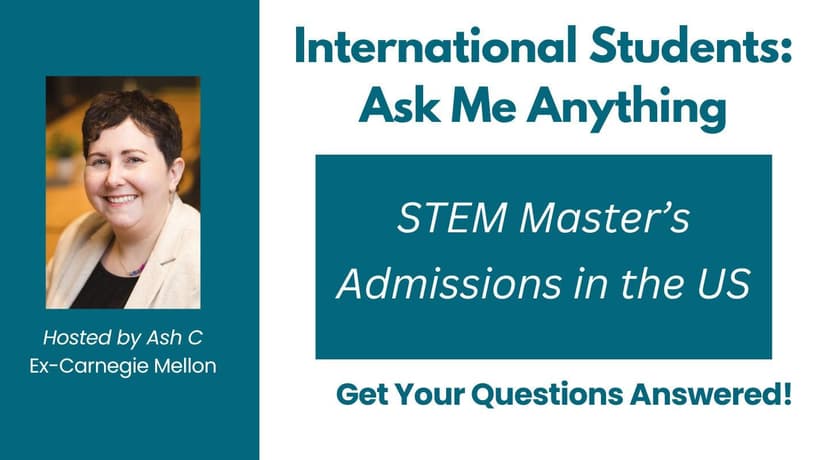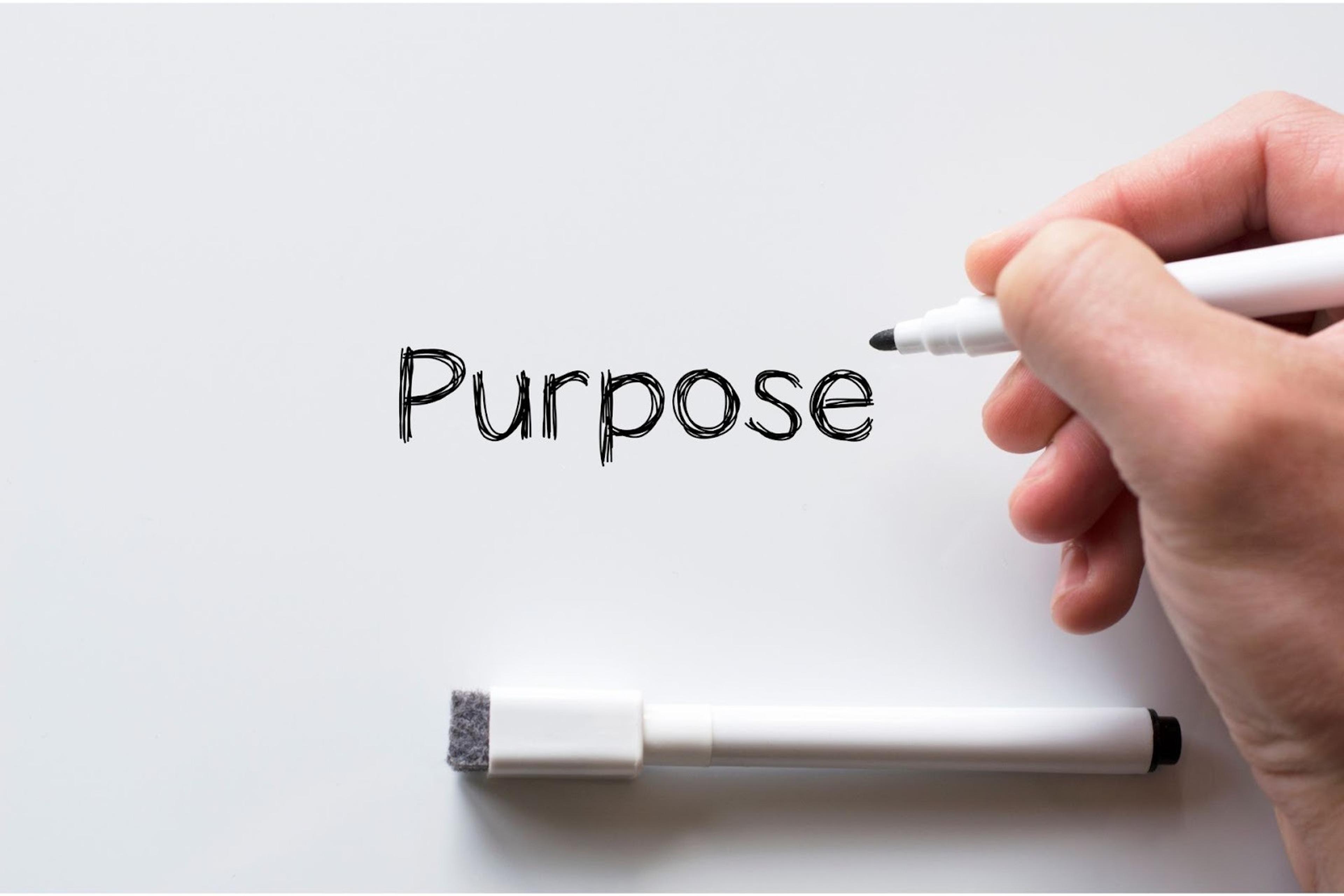Statement of Purpose vs. Personal Statement: Differences, Tips, & What to Know
Understand the difference between a statement of purpose vs personal statement and learn exactly how to write each one with expert-backed frameworks and tips.
Posted November 5, 2025

Join a free event
Learn from top coaches and industry experts in live, interactive sessions you can join for free.
Table of Contents
When you apply to graduate school, two essays often dominate: the Statement of Purpose (SOP) and the Personal Statement. While many applicants treat them as interchangeable, understanding the key differences matters, especially when the admissions committee uses these pieces to assess your readiness, fit, and motivation.
In this article, you’ll learn exactly how a personal statement vs statement of purpose differ (with strong examples), when and how to write each one (or a combined hybrid), real‑world comments from applicants on forums like Reddit (yes, what actual “grad students” think) and tactical steps to craft each type so you’ll stand out in your selected graduate program
Let’s begin by defining both.
What Is a Personal Statement?
A personal statement is an essay that emphasizes you as a person, not just your credentials. It gives the reader insight into your life experiences, personal qualities, academic journey, and what drives you to pursue graduate school. According to university writing centers:
“The focus of the personal statement is typically on personal thoughts, feelings, and reflections… more biographical.”
“It typically includes information about your background, perspectives of diversity, and how your experiences have shaped you as a person and a learner.”
Why it matters
When the committee reads your personal statement, they’re asking: Who is this person? Will they add value to the community? Are they prepared for this academic adventure?
Real-world insight: “Your personal statement is more about you and your journey, drive, and passion.”
What to include
A strong personal statement typically covers:
- A key moment or turning point that shaped your academic interests or career goals
- Your motivations for choosing a particular field (for example, if you're applying to a computer science program)
- Your personal background: challenges you overcame (such as significant barriers), life experiences that formed your lens, academic record, and academic achievements, but framed in a narrative
- How your own interests, values, and personal qualities (e.g., being a persistent person) prepare you for graduate study
- Why you want to apply to this particular program or school (though a heavier fit‑analysis appears in SOP, a personal statement can still reference why this good match)
- Evidence of relevant experiences (volunteer work, leadership, research assisting, internships), but tied into the story rather than listing
- A reflection on how you’ll contribute to the community and succeed, not just in the short term but in your long-term goals
Common pitfalls
- Too much résumé‑style listing of accomplishments without narrative. Your personal statement needs story + impact.
- Excessively informal or off‑topic: make sure all life experiences you describe tie back to your motivation and readiness for graduate school applications.
- Neglecting to mention the program or leaving the reader thinking, “Why this graduate education?”
- Over‑generalizing: admissions officers read tons of “I’ve always loved learning” lines. Instead, anchor in specific life experiences, academic journey, and relevant experiences that support your claim.
Read: The Power of ‘I’ Statements in Admissions Storytelling
What Is a Statement of Purpose?
A statement of purpose is more technical in focus. It focuses on your academic and professional background, your research interests, the specific program you’re applying to, how you’ll contribute, what you aim to achieve, and how the program will help you meet your career goals.
Students in a Reddit thread agree: “SOP = what you want to do there and why that program is the right fit for you. Personal statement = about you… What brought you to this topic?”
Why it matters
For the admissions committee, the SOP answers: Do you have the background, readiness, and plan to thrive in this graduate program? Are your research interests aligned with our faculty? Will you contribute to our academic community?
What to include
A solid statement of purpose should cover:
- Your academic career to date: major(es), key academic experiences, research or project work
- Your research interests: what specific area you want to explore, why it interests you, and what questions you hope to answer
- What you did: highlight academic achievements, research, internships, collaborations with professors, and how they’ve prepared you for graduate study
- Why this particular graduate program: mention faculty, labs, resources, projects, courses that appeal to you (“specific program” fit)
- How the program fits with your career goals: both short-term goals (immediately post‑grad degree) and long-term goals (10+ years ahead)
- What you plan to contribute: labs you’d join, seminars you’d enrich, multidisciplinary initiatives, etc.
- Evidence of readiness to handle rigorous graduate study: mention academic record, analytical skills, publications/internships, if any
- Possibly a brief mention of why graduate school is the next step.
Common pitfalls
- Being too vague or generic: “I want to learn more and contribute to society” isn’t enough. Use specific examples and reference faculty or labs if required.
- Ignoring the prompt: If the grad school asks for a personal statement, but you submit a pure SOP, you might lose effectiveness.
- Over-emphasizing past work without tying it to future fit.
- Failing to show why this program is right for you (and you for them). Fit matters.
Read: The Top 10 Mistakes People Make on their Graduate School Applications
Personal Statement vs. Statement of Purpose (Side‑by‑Side Comparison)
| Feature | Personal Statement | Statement of Purpose |
|---|---|---|
| Primary Purpose | To showcase who you are, including your values, formative experiences, and the motivations behind your academic interests. | To outline what you intend to study or research, how you are academically prepared, and why the specific program aligns with your goals. |
| Tone | Reflective, narrative, and personal in voice. | Structured, formal, and forward-looking in tone. |
| Core Emphasis | Emphasizes life experiences, personal context, identity, and key moments that shaped your decision to pursue graduate study. | Emphasizes academic preparation, research interests, faculty alignment, and professional goals. |
| Typical Prompt Asks You To... | Describe your background and what led you to pursue graduate education. | Explain your academic and research interests, and how this program will help you meet your future goals. |
| Best For... | Providing personal context, highlighting challenges or barriers you’ve overcome, and showing your character and motivation. | Demonstrating academic readiness, clarity of purpose, and a strong match with the program’s faculty and resources. |
| What the Committee Wants to Learn | Who you are beyond your transcripts and test scores, and whether your life experiences and mindset will enrich the program’s community. | Whether you have a focused plan for graduate study and the academic skills and research alignment to succeed in your program. |
| Examples of What to Include | You might include family background, formative experiences, cultural identity, life challenges, or key personal or academic turning points. | You should include your academic history, relevant coursework or research, specific faculty you want to work with, and long-term career plans. |
Note: In many applications, the personal statement and statement of purpose are used interchangeably or combined into a single essay that blends personal background with academic goals. While the statement of purpose should remain academically focused, including a brief personal context can strengthen your motivation and help you stand out.
When Should You Write a Personal Statement, a Statement of Purpose, or a Hybrid?
Many graduate programs ask for only one written statement, but use terms like “statement of purpose” and “personal statement” interchangeably. That leaves it up to you to read between the lines and respond strategically.
As one student stated: “The terms ‘SOP’ and ‘Personal Statement’ are often interchangeable. I like the following structure: SOP = future; Personal Statement = past.”
That’s a helpful rule of thumb, but to craft the right essay, you need to go deeper.
Step-by-Step: How to Interpret the Prompt and Choose the Right Approach
1. Read the full prompt and application instructions carefully.
Don’t rely on the file label. Instead, highlight exactly what the program is asking you to address.
- If the prompt says: “Describe your academic interests, research goals, and why this program is a fit,” → write a Statement of Purpose.
- If it says: “Tell us about yourself and why you’re pursuing this field,” → write a Personal Statement.
- If it includes elements of both (e.g., “Describe your background and goals, and explain why this program is right for you”) → write a hybrid that combines both formats.
2. Identify whether the program expects one statement or two.
Some programs (like Michigan Robotics) explicitly require both a Statement of Purpose and a Personal Statement as separate submissions. If so, treat them as distinct essays:
- Use the personal statement to tell your story, reflect on key life experiences, and offer context for your academic journey.
- Use the statement of purpose to define your research interests, academic preparation, and fit with the specific program.
3. If writing one essay, blend both functions with intention.
If the program only allows one essay, but expects both personal and academic context, you’ll need to strike a balance:
- Start with a compelling personal hook or backstory that frames your interest in the field.
- Transition into your academic preparation, research goals, and program alignment.
- End with a clear statement of your future goals and what you hope to contribute.
4. Always include program-specific alignment.
Even in a personal statement, show you’ve done your homework. Refer to the program’s faculty, labs, curriculum, or mission to demonstrate that you’re a strong fit.
5. Don’t repeat yourself across documents.
If you’re submitting both a personal statement and a statement of purpose, ensure they offer different perspectives. Together, they should form a complete and compelling picture of who you are (past, present, and future).
Expert Tip: Think of your application as a portfolio. Each component (transcript, letters, résumé, personal statement, SOP) serves a different purpose. The goal isn’t to repeat content, but to build a cohesive story across multiple touchpoints.
Whether you’re writing one statement or two, use your essays to connect the dots and show the admissions committee why you’re the right candidate for this program, at this stage of your academic or professional journey.
Actual Examples by Program Type
PhD in Computer Science at Stanford
The application asks: “Please describe your research interests and how they align with our department.”
Write a Statement of Purpose. Focus on your specific research goals (e.g., machine learning for healthcare), relevant projects or publications, and why particular Stanford faculty or labs are a strong match. Personal background is optional, but can be briefly included to frame your motivation.
Master’s in English at Columbia
The prompt reads: “Submit a personal or academic statement explaining your interest in the program and your preparation for graduate-level study.”
Write a hybrid. Open with a personal story, maybe how a particular book, mentor, or identity shaped your interest in literature, then shift to your academic background, writing samples, and research themes you want to explore. Mention professors or areas of study at Columbia that align with your interests.
Master of Public Health (MPH) at Johns Hopkins
The program requests: “Describe your professional background, public health interests, and goals for graduate study.”
Write a hybrid. Blend your story (e.g., working in a community clinic, living through a public health crisis) with your professional goals. Then show how Hopkins’ coursework, capstone structure, and faculty will help you become a policy analyst, program designer, or epidemiologist.
PhD in Psychology at Yale
The prompt says: “What are your research interests and how do they fit with our faculty’s work?”
Write a focused Statement of Purpose. Emphasize your undergraduate research experience, methodological training, and specific research questions (e.g., cognitive bias in memory recall). Reference 1–2 professors you hope to collaborate with and how your work builds on theirs.
MA in Sociology at the University of Chicago
The instructions ask for: “a personal statement explaining your interest in sociology and what you hope to accomplish in graduate study.”
Write a hybrid, slightly more personal. Begin with a formative experience, perhaps growing up in a community affected by housing policy, then connect it to your academic coursework, interests in urban sociology, and how Chicago’s research strengths support your goals.
MS in Data Science at UC Berkeley
The prompt reads: “Discuss your academic background, technical skills, and why you’re pursuing graduate study in data science.”
Write a Statement of Purpose. Highlight your STEM foundation, coding and analytics experience, and applied data projects. Mention how Berkeley’s program, including its practical labs or AI electives, will help you pivot into roles in fintech, AI ethics, or healthcare data.
Master of Social Work (MSW) at NYU
The prompt says: “Explain your decision to pursue social work, relevant personal or professional experiences, and career goals.”
Write a personal statement with a strong narrative core. Share your lived experience or professional journey, such as supporting underserved populations or navigating family care, then connect it to your drive to work in clinical or policy settings. Touch on how NYU’s training and values align with your mission.
How to Write Each: Frameworks, Strategy, and ProTips
Writing a personal statement or statement of purpose isn’t just about answering a prompt; it’s about presenting a focused, persuasive case that you're prepared for graduate school and a great fit for the program. Below are high-impact frameworks, followed by expert insights to help elevate your draft from “fine” to “formidable.”
How to Write a Strong Personal Statement
A strong personal statement shows who you are beyond your transcript. It’s reflective, honest, and driven by a clear through-line: what shaped your decision to pursue graduate school, and how your background informs the kind of student, scholar, or professional you’ll be.
High-impact structure (1–2 pages, unless otherwise specified):
Opening ("the hook")
Start with a compelling moment, something personal, specific, and meaningful. It could be a challenge you overcame, a mentor who changed your path, or a moment that reframed how you think about your field. This hook sets the emotional and intellectual tone for the essay.
Academic journey and development
Explain how your interests evolved over time. This isn’t a list of achievements, it’s a narrative arc. Highlight the classes, projects, mentors, or academic moments that deepened your commitment to your field. Use vivid examples to illustrate how your ideas or goals changed.
Challenges, context, or barriers (if relevant)
If you've faced personal, cultural, or structural obstacles, this is the place to share them, but always through the lens of resilience, not hardship alone. Focus on what the experience taught you and how it shaped your perspective or drive.
Motivation and personal qualities
Connect the dots between your past and present. What motivates you? How do your values or personality traits align with your academic interests? Use this section to reflect on your inner “why,” and how it positions you for graduate-level work.
Future goals and subtle program fit
Briefly mention what you hope to achieve through graduate school and why this particular program supports those goals. You don’t need to dive deep into faculty or curriculum, that’s for the SOP, but showing awareness of the program’s focus or ethos helps ground your goals in reality.
Conclusion: Confidence and contribution
Close by summarizing your readiness and excitement to join the graduate community. This is your final chance to leave the reader with a clear sense of your voice, values, and long-term vision.
Pro Tips
- Use specificity to show growth, not just interest. Avoid overused phrases like “I’ve always been passionate about...” or “I love helping people.” Instead, illustrate your development with clear, grounded moments that show change or insight. For example, rather than saying you’re a curious person, describe a research experience that challenged your assumptions and sparked a new line of inquiry.
- Don't manufacture adversity. You don’t need a dramatic hardship story to write a powerful personal statement. Focus on meaningful life experiences, whether it’s being the first in your family to attend college, navigating cultural identity, or shifting academic interests that shaped how you think and what you care about. Authenticity is more important than intensity.
- Frame experiences as evidence, not résumé bullets. This essay isn’t a second résumé. Instead of listing accomplishments, frame them as part of your journey. For instance, don’t just say you were a teaching assistant, explain how it helped you develop communication skills or deepen your academic understanding.
- Mention program fit, but don’t turn it into an SOP. A line or two referencing the program’s values, focus, or community is enough. You want to show intentionality, not shift into a full academic proposal. Save specific references to faculty, labs, or research centers for your SOP, if applicable.
- Be intentional with key themes. Terms like academic journey, life experiences, personal details, and own interests should be woven naturally into your writing. They signal relevance to the admissions committee while keeping your story human and grounded.
Read: How to Write a Personal Statement for Grad School (According to the Experts)
To craft a clear, compelling grad school essay that highlights your strengths and aligns with what admissions committees actually want, download Personal Statements: A Guide to Getting Started
How to Write a Strong Statement of Purpose
Your statement of purpose should be a clear, structured argument for your academic readiness, research potential, and program fit. Unlike the personal statement, it should read more like a professional essay than a personal narrative.
High-impact structure (usually ~2 pages):
Opening: State your research interests and goals
Start with a confident summary of what you want to study, why it matters, and how it connects to your long-term goals. Avoid generic intros and get to the point quickly.
Academic background and preparation
Explain how your academic record and experiences (research, internships, key coursework) have prepared you for graduate-level work. Highlight your most relevant skills, not just your GPA.
Research interests and plan
Describe the specific research questions, areas, or problems you want to explore. Mention methodologies you’ve worked with, ideas you want to test, or domains you want to specialize in. Show both clarity and curiosity.
Program alignment
Reference 1–3 faculty members, labs, or program features that align with your goals. Explain why this program is a strong fit, not just that it's prestigious. Show you’ve done your homework and can articulate what you'll gain from and contribute to the program.
Career goals (short and long-term)
Clarify where you’re headed. If you're aiming for academia, be clear about your research trajectory. If you're pursuing applied or industry work, explain how the program will help you make that impact. Admissions readers want to see that you’ve thought beyond grad school.
Conclusion: Reaffirm purpose and fit
Wrap up by reinforcing your direction, preparation, and enthusiasm for joining the program. End with energy and clarity.
Pro Tips
- Lead with clarity, not story. Unlike a personal statement, your SOP should open with a direct articulation of your research goals or academic focus. You don’t need a narrative hook. Instead, lead with what you’re interested in, why it matters, and what you hope to explore further. This shows focus, maturity, and academic readiness.
- Make every experience connect to your goals. When discussing past research or academic work, always explain how it relates to your future plans. A strong SOP doesn’t just list experiences; it connects them in a coherent trajectory. If you took a course or completed a project, clarify how it informed your interests or sharpened your research questions.
- Be selective and specific when referencing faculty. Only mention faculty or labs if you’ve truly researched them and can explain why they align with your work. Don’t name-drop. Instead, write something like: “Professor X’s work on [specific topic] intersects directly with my interest in [your focus], particularly her approach to [method/theory].”
- Use technical language appropriately but accessibly. Demonstrate fluency in your field, but avoid overly complex jargon unless necessary. Your audience is likely faculty in your discipline, but clarity and conciseness still matter. Prioritize explaining your ideas well over sounding impressive.
- Avoid empty ambition and show grounded purpose. Saying you want to “change the world” isn’t persuasive unless it’s backed by a concrete plan. Instead of broad aspirations, explain what you want to study, what skills you want to gain, and how you plan to apply them to specific problems or communities.
- Don’t let the SOP become a résumé in paragraph form. The goal isn’t to cram in every experience; it’s to show direction and fit. Focus on 2–3 formative experiences, and unpack them in detail. Depth beats breadth every time.
Real-World Insights (and What They Actually Mean)
Sometimes the clearest admissions advice doesn’t come from official blogs; it comes from applicants who’ve been in the trenches. Here’s what real users on r/gradadmissions had to say about the statement of purpose vs. personal statement confusion, and what you can take from it as you write.
1. “SOP = future, Personal Statement = past”
“The terms ‘SOP’ and ‘Personal Statement’ are often interchangeable… I like the following structure: SOP = future; P/D essay = past.”
Expert Takeaway: Even when a program labels the essay as a “personal statement,” the prompt might actually expect you to address future plans and program fit. Don’t rely on terminology; read the prompt carefully. If it asks about your goals or what you hope to accomplish, you’ll need to incorporate SOP-style elements, regardless of the label.
2. Personal Statements Are About Who You Are and Why You Care
“Your personal statement is more about you and your journey, drive, and passion.”
Expert Takeaway: In a personal statement, your goal is to help the committee understand who you are as a person, what shaped your values, interests, and perspective. This is your chance to share your life experiences, personal qualities, and the “why” behind your desire to pursue graduate study. The most effective statements combine introspection with clarity, not just storytelling for its own sake.
3. SOPs Are About Goals, Fit, and Academic Readiness
“SOP = what you want to do there and why that program is the right fit for you.”
Expert Takeaway: A statement of purpose is not about your past so much as your academic preparation, research focus, and future trajectory. The admissions committee is asking: Do you know what you want to study? Can you succeed here? Are your goals aligned with our faculty and resources? This means naming research interests, showing relevant experience, and referencing specific program features or professors that make the school a fit.
4. Be Careful Mixing Personal Narrative into SOPs
“An SOP is more academic, and no, you shouldn’t start it with a personal story nor should you center it around a personal narrative.”
Expert Takeaway: The tone of your SOP should be professional, focused, and academic. While it’s okay to briefly mention a personal experience to explain your research direction, don’t open with a childhood story or over-index on emotional narrative. Keep the spotlight on your academic path, research goals, and program fit. Your SOP should read like a blueprint, not a memoir.
How to Choose and Write the Right Statement for Your Application
To write a statement that stands out, start by analyzing exactly what your target program asks for, whether it’s a personal statement, a statement of purpose, or both. Don’t rely on the label alone. Instead, annotate the prompt and pay close attention to verbs like describe, explain, outline, or tell us about. If the language emphasizes your background, values, or motivations, lean toward a personal statement. If it focuses on your research goals, academic preparation, or program alignment, you’re looking at a statement of purpose.
Then, audit your experiences: list your academic achievements, research projects, and relevant experiences on one side, and your personal qualities, challenges, and life experiences on the other. This helps you choose which content belongs where and ensures balance if you’re writing a hybrid. Use the right framework and maintain logical flow: a personal statement should read as story → background → motivation → future + fit, while a statement of purpose should move from purpose → academic record → research interests → program fit → career goals.
Every essay must be tailored, reference the specific program, faculty, labs, or courses that align with your goals, and never reuse the same essay for multiple schools. As you revise, make sure every example demonstrates growth and readiness (“By doing X, I learned Y, which prepared me for Z”), and replace vague adjectives like passionate or committed with concrete evidence. Keep your tone professional and reader-aware; the admissions committee expects clarity, coherence, and purpose.
Finally, proofread meticulously and get feedback from trusted mentors or advisors. Your opening paragraph should immediately grab the reader’s attention, and every sentence that follows should reinforce one message: you’re prepared, focused, and an excellent fit for their program.
Read: A Great Admissions Coach Can Be Life-Changing – Here’s How
Final Thoughts & Your Next Steps
Understanding the difference between a personal statement and a statement of purpose gives you an edge, but true impact comes from executing each one with precision, depth, and intentionality. Top applicants don’t just explain what they’ve done; they connect the dots between their academic journey, research interests, and future goals in a way that feels focused, persuasive, and tailored to the program. A strong statement convinces the admissions committee that you’re not only prepared but an ideal fit.
If you want expert support during this process, top master’s programs coaches are available to help refine every part of the statement, from the opening hook to program-specific alignment.
Also, join our free events for more strategic insights!
See: The 10 Best Graduate & PhD Admissions Consultants: What They Do and When to Hire One
Read next:
- Beyond the Checklist: How to Showcase Your Unique Skills and Experiences in Your Grad School Applications
- What Extracurriculars are Graduate Programs Looking For?
- Why ChatGPT Can’t Write Your Personal Statement
- A Word of Caution on Application Essays and AI
- What GPA Do You Need to Get Into Graduate School?
- What Does "Holistic Review" Mean in Graduate School Admissions?
- Graduate Admissions: Myths Busted!
FAQs
Are a personal statement and a statement of purpose the same thing?
- Not exactly. While the terms are sometimes used interchangeably, typically a personal statement focuses on who you are, and a statement of purpose focuses on what you plan to do and why this program is right for you.
Which one should I write if my program asks for ‘Statement of Purpose or Personal Statement’?
- Read the prompt carefully. If it emphasizes research/academic goals → write SOP. If it emphasizes story/background → write personal statement. If it’s ambiguous, create a hybrid covering both narrative and future‑oriented research goals.
Can I use the same essay for multiple programs?
- You can repurpose basic structure, but you must tailor the essay to each particular program, adjust for faculty/research fit, and avoid generic statements.
How do I highlight research interests and academic background in the SOP?
- Use concrete examples of research or projects you worked on; describe what questions interest you; show how your background prepared you; and reference the specific program’s strengths that align with your interests.
What should I avoid including in the personal statement?
- Avoid listing accomplishments without context, being too generic (“Since childhood…” with no tie to the field), huge life stories that don’t connect to your academic path, and neglecting the program altogether.
Browse hundreds of expert coaches
Leland coaches have helped thousands of people achieve their goals. A dedicated mentor can make all the difference.



















